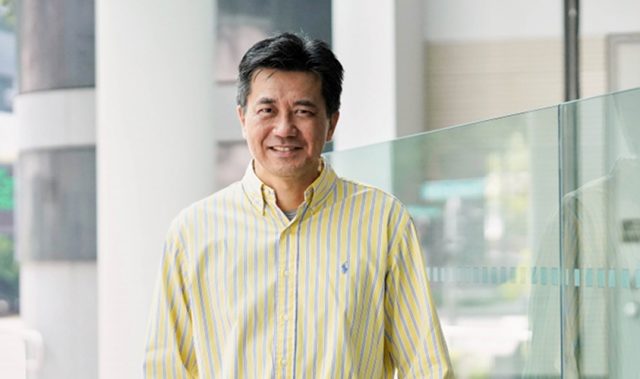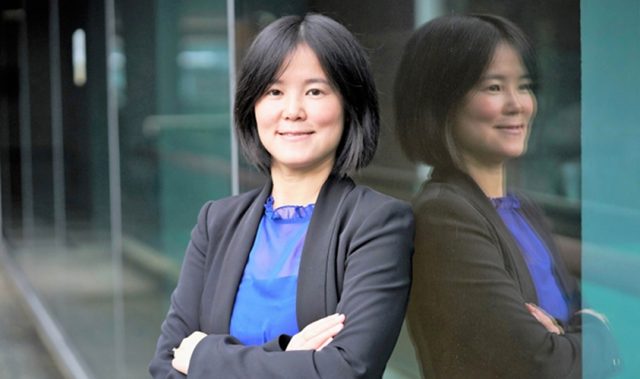
AsianScientist (Aug. 7, 2014) – By Eugene Yap – Women’s participation in the workforce has been hailed by The Economist as one of the most remarkable revolutions in the past 50 years. Up till today, access to childcare remains one of the key determinants of a woman’s decision to seek employment, with grandparents and other relatives often stepping in to provide much needed support.
As demographics in developed countries skew towards a lower proportion of working adults and a higher proportion of elderly people, policy makers have sought incentives to encourage women to have more children without having to quit the labour force. To better understand the underlying mechanisms, Assistant Professor Christine Ho from the Singapore Management University (SMU) School of Economics studies, evaluates and designs family-focused policies such as childcare subsidies.
Making childcare subsidies work
As Professor Ho explains, governments may provide childcare subsidies to full-time working mothers to encourage economic self-sufficiency. A typical argument made by policy makers for giving childcare subsidies to working mothers is that formal childcare may be perceived to be of better quality than informal childcare, which mothers or relatives could provide.
In her paper entitled “Efficient Childcare Subsidies” which was co-authored with Professor Nicola Pavoni from Università Bocconi’s Department of Economics, Professor Ho discovered that in spite of the arguments on economic self-sufficiency and childcare quality, it would still be efficient to have targeted subsidies for low to middle income working mothers with young children.
Most countries have a progressive income tax system where high income earners are taxed at a higher rate compared to low income earners. Such a system may discourage potentially high income earners from working longer hours since one can pay lower income taxes by working less.
“We were able to show that childcare subsidies for low to middle income working mothers remained efficient because paid formal childcare not only became more affordable, but also availed them to work. At the same time, by making paid childcare cheaper, such subsidies reduced the incentive for potentially high income earning mothers to work less to look after their children themselves.”
“More notably, the provision of childcare subsidies in a sliding scale by offering higher childcare subsidies to lower income earners was consistent with childcare subsidy schemes observed around the world,” she says.
Hands-on grandparents
Apart from formal childcare, grandparents could also play an important role in encouraging mothers to work, says Professor Ho. Indeed, she has found that grandparents are increasingly involved in providing childcare.
In a statistical analysis of intergenerational families in the United States (US) that was published in the Review of Economics of the Household in 2013, she documented that the proportion of children below the age of 18 living with their grandparents had tripled in just 40 years between 1970 and 2010. In addition, around 20% of children under the age of five with employed mothers were cared for primarily by a grandparent during the day. Those grandparents provided an average of 24 hours of grandchild care a week in 2005.
“As people live longer and fertility rates decrease, family units have become more vertical and less horizontal. The scope for intergenerational help is now greater. This could be one of the reasons why grandparents have become more involved in grandchild care,” she explains.
Having established that grandparenting is a growing phenomenon, Professor Ho has gone on to study how policies directed at encouraging mothers to work have influenced the amount and kind of grandchild care provided. In 1996, the Personal Responsibility and Work Opportunity Reconciliation Act (PRWORA) in the US tried to encourage low income single mothers to rely less on welfare and return to work by tying welfare benefits and childcare subsidies to their work hours.
While she had initially expected grandmothers to spend more time looking after grandchildren as stay-at-home mothers entered the labour force, her results showed otherwise.
“The PRWORA was found to have an indirect impact on related grandmothers whom single mothers might rely on for childcare or financial transfers for childcare costs. My study showed that grandmothers actually decreased grandchild care help and increased financial transfers. In other words, the welfare-to-work reform encouraged mothers to work, and grandmothers reacted by substituting time transfers for money transfers,” Professor Ho says.
Such findings on grandparents being indirectly affected by their children’s childcare needs will have implications on public policies aimed at changing work participation rates.
“Given that grandchild care plays a potentially important role in grandparents’ economic behaviour, policy reforms that target parents can have an indirect impact on grandparents. For example, grandmothers who live together or close to low-income, single-mother daughters were found to work more, so both generations are now working more as a result of the welfare-to-work reform,” she says.
Implications for Asia
Given that the trends of increasing life expectancy and decreasing fertility rates are even stronger in Asia, Professor Ho’s research on grandchild care and welfare policies becomes particularly relevant.
“With regard to the Asian context, we might face a similar situation whereby grandparents may be called upon to help look after their grandchildren. Given that the Singapore government is trying to encourage older workers to continue working through the Workfare Income Supplement Scheme, one potentially feasible idea is to pay older workers to look after grandchildren instead of subsidising them to work in formal occupations.”
“Encouraging older workers to look after their grandchildren relieves the burden on the working population to care for both the young and the elderly, and at the same time reduces high childcare costs, which could be a reason why people are having fewer children,” Professor Ho notes.
Although paying grandparents to look after their grandchildren may seem like a win-win solution, Professor Ho notes that there are other dimensions that need to be considered.
“Which approach would be more productive for the economy? Which one would offer greater satisfaction to grandparents, parents and grandchildren? These are potential research questions that would be interesting to explore in future research,” she concludes.
Asian Scientist Magazine is a media partner of the Singapore Management University Office of Research.
——-
Copyright: SMU Office of Research. Read the original article here; Photo: Singapore Management University.
Disclaimer: This article does not necessarily reflect the views of AsianScientist or its staff.












